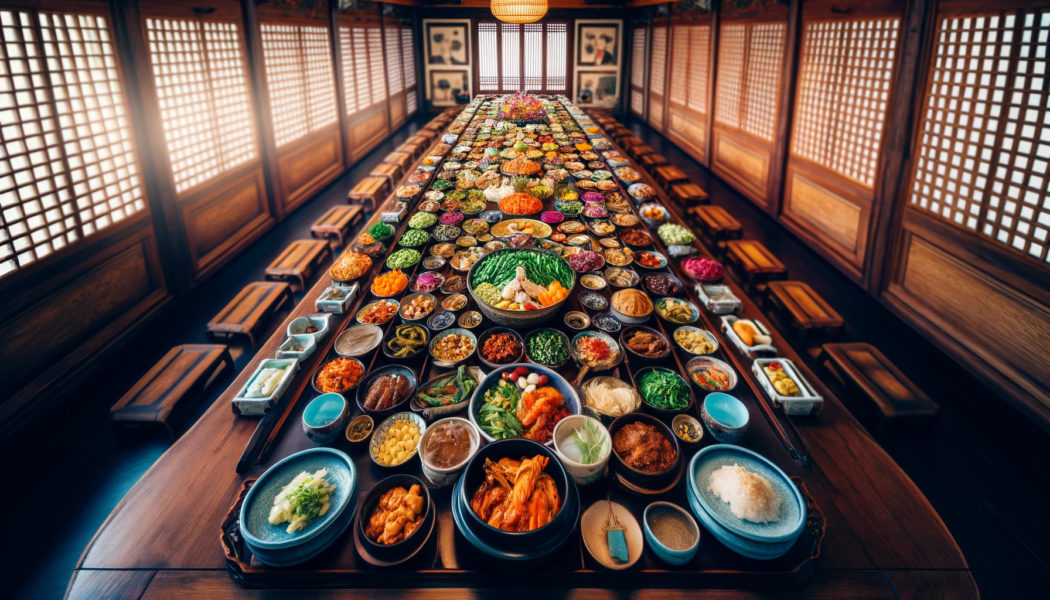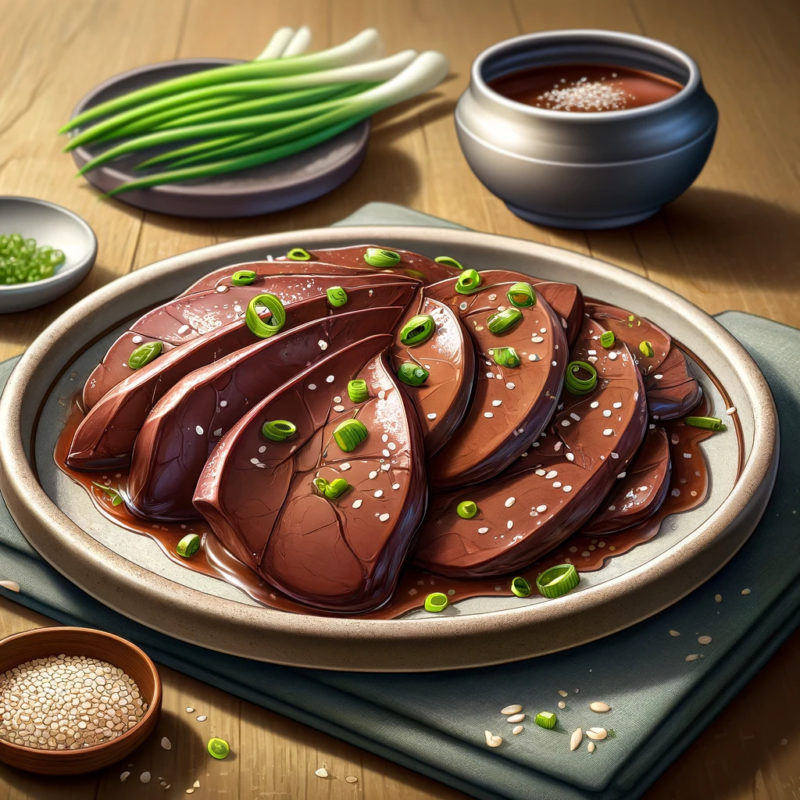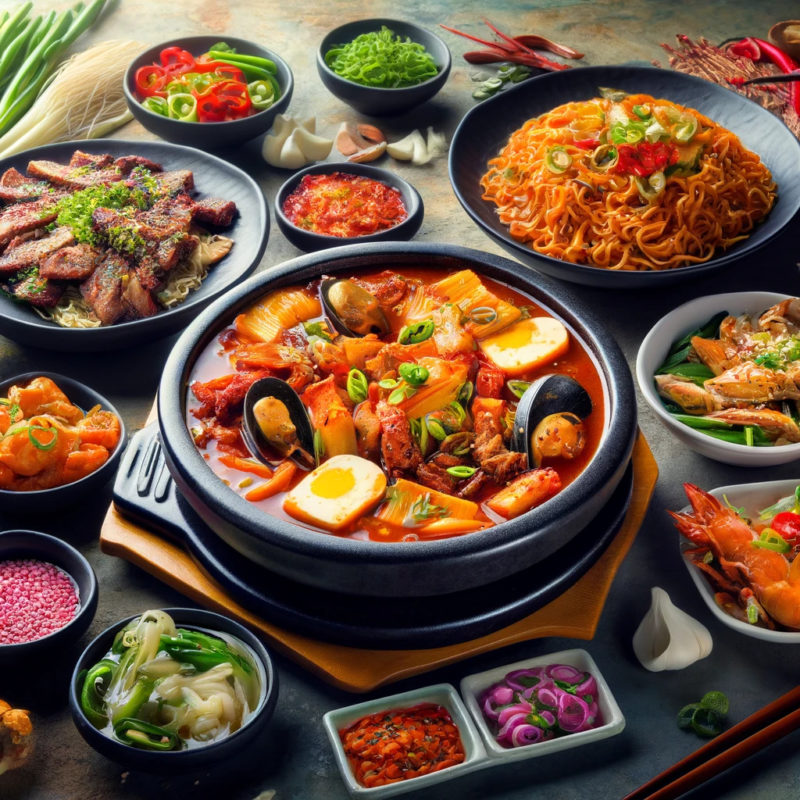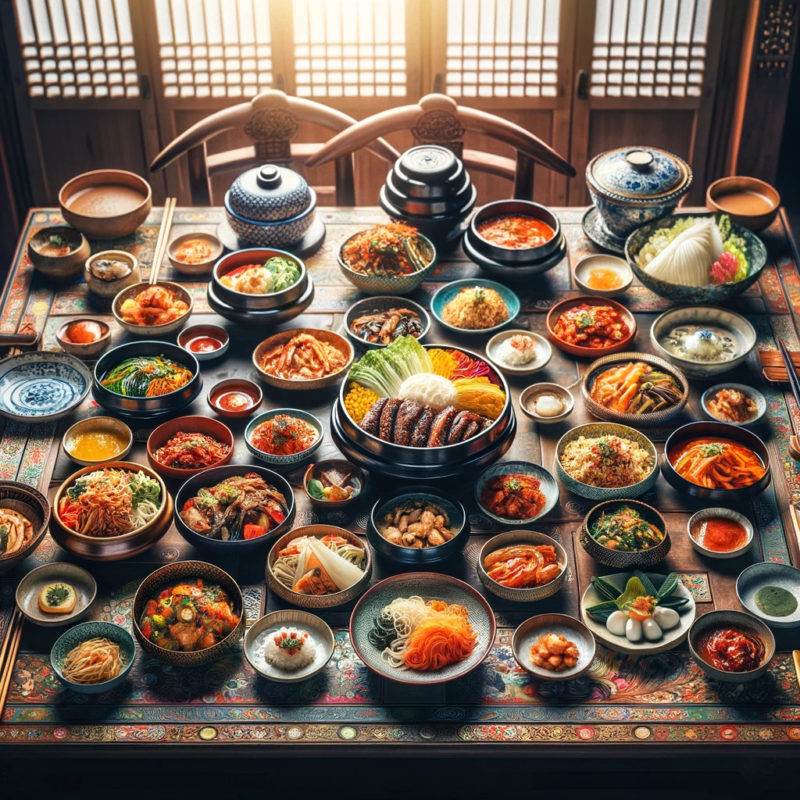Exploring the Best Tasting South Korean Dishes (Part 1)
 South Korean cuisine, known for its vibrant flavors and diverse dishes, offers an exciting culinary adventure for food lovers. My journey into the heart of Korean dining began with the iconic Kimchi. This traditional side dish made from salted and fermented vegetables, primarily napa cabbage and Korean radishes, is enhanced with a medley of seasonings such as gochugaru (chili powder), scallions, garlic, ginger, and jeotgal (salted seafood). Initially, my taste buds needed some time to acclimatize, but soon, like my mom—who adored it from her first bite—kimchi became a staple at our table.
South Korean cuisine, known for its vibrant flavors and diverse dishes, offers an exciting culinary adventure for food lovers. My journey into the heart of Korean dining began with the iconic Kimchi. This traditional side dish made from salted and fermented vegetables, primarily napa cabbage and Korean radishes, is enhanced with a medley of seasonings such as gochugaru (chili powder), scallions, garlic, ginger, and jeotgal (salted seafood). Initially, my taste buds needed some time to acclimatize, but soon, like my mom—who adored it from her first bite—kimchi became a staple at our table.
Embarking on a food trip across Korea can be one of the most delightful experiences. Here are some of the best-tasting dishes from South Korea that you absolutely must try:
1. Galbitang: A Hearty Delight from Korean Cuisine
Galbitang, also known as Korean beef rib soup, is a traditional dish deeply rooted in the culinary traditions of Korea. Made primarily from beef short ribs, locally referred to as galbi (갈비), this soup is both nutritious and warming, making it a popular choice during the colder months or on any day that calls for a comforting meal.
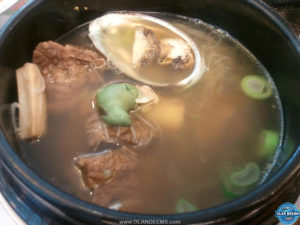
Galbitang (갈비탕)
The preparation of Galbitang involves simmering beef ribs with a medley of ingredients that impart depth and flavor to the broth. Among these are Korean radish (무), which adds a mild sweetness and crisp texture, and onions that melt into the soup, enriching its base. Garlic and ginger are essential inclusions, offering a zesty punch that balances the richness of the meat.
Soy sauce, particularly 국간장 (a type of Korean soy sauce made specifically for soups and stews), is used judiciously to season the broth, giving it a savory umami that is irresistible. The soup is often served with starch noodles (당면), which are clear and chewy, providing a delightful texture contrast to the tender ribs.
Galbitang isn’t just beloved for its flavor; it is also appreciated for its clear, hearty broth and the way it showcases the simplicity and elegance of Korean cooking. It’s a dish that brings comfort and joy to many, including those who declare it their favorite food.
Whether enjoyed in a humble kitchen or a fine dining restaurant, Galbitang represents a piece of Korean heritage that continues to warm hearts and homes across the globe.
2. Samgyeopsal: The Quintessential Korean BBQ Experience
Samgyeopsal, meaning “three-layer meat,” refers to the beloved Korean dish featuring thick, fatty slices of pork belly. This indulgent cut is prized for its layers of meat and fat, which render down during cooking to create a rich, flavorful experience. Known as a social food, Samgyeopsal is not just a meal; it’s an event, often enjoyed as a favorite pulutan (finger food) alongside alcoholic beverages, making it a staple at gatherings and celebrations.

Samgyeopsal (삼겹살)
The traditional way to enjoy Samgyeopsal is at a Korean BBQ, where diners cook the meat themselves on grills built into the dining table. As the pork sizzles, the air fills with its enticing aroma, promising a delicious feast. Once grilled to crispy perfection on the outside while remaining tender on the inside, the meat is typically savored with
a variety of fresh and piquant accompaniments.
Key to the Samgyeopsal experience are the garnishes that complement the richness of the pork. Fresh lettuce leaves serve as the wrap for the meat, adding a crisp, clean contrast. Essential to the ensemble are slices of raw garlic and spicy chili paste, which enhance the pork’s flavor with bursts of spice and heat. These simple yet effective pairings elevate the pork belly into a harmonious blend of textures and tastes.
Samgyeopsal’s popularity can be attributed not only to its delightful taste but also to the communal and interactive nature of its preparation and consumption. It embodies the spirit of Korean dining, emphasizing shared meals, vibrant flavors, and the joy of eating together. Whether as a casual meal or a celebratory feast, Samgyeopsal remains a central part of Korea’s culinary identity, cherished by locals and visitors alike.
3. Bossam: A Flavorful Ensemble of Korean Delicacies
Bossam stands out as a cherished culinary tradition in Korean cuisine, showcasing the rich flavors and unique serving styles that Korean food is known for. This dish centers around belly pork, which is boiled in a blend of spices until tender and then thinly sliced to reveal its succulent texture. Bossam is not just about the pork; it’s a complete meal that involves an array of complementary side dishes, each adding its own flavor and texture to the main ingredient.
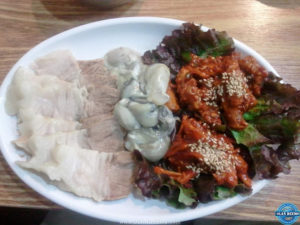
Bossam (보쌈)
The preparation of Bossam involves simmering the pork in a carefully selected mix of spices, which infuses the meat with deep, aromatic flavors while ensuring it remains juicy and tender. Once cooked, the pork is typically cooled and sliced into bite-sized pieces, ready to be wrapped in a variety of fresh vegetables.
The real magic of Bossam lies in its accompaniments. It is traditionally served with a spicy radish salad, which offers a crisp, tangy contrast to the rich pork. Sliced raw garlic and ssamjang (a flavorful Korean wrap sauce made from fermented bean paste and chili paste) are essential for adding a punch of flavor. Saeu-jeot (salted shrimp) and gul (oysters) are often included to enhance the dish with a hint of the sea. Kimchi, with its spicy and sour notes, is another indispensable side that complements the fatty pork beautifully.
Diners enjoy Bossam by wrapping a slice of pork and a combination of these side dishes in ssam vegetables like lettuce, kkaennip (perilla leaves), or the tender inner leaves of napa cabbage. This method of eating not only makes Bossam a delightful experience but also allows each diner to customize their wrap with the flavors they love the most.
Bossam embodies the communal spirit of Korean dining, encouraging sharing and interaction at the table. It’s a dish that brings people together, offering a delicious exploration of flavors and textures that make Korean cuisine so beloved. Whether enjoyed at home or in a restaurant, Bossam is a festive and flavorful feast that satisfies the soul.
Exploring South Korean cuisine offers not just a variety of flavors but also a glimpse into the country’s rich culinary culture. Each dish tells a story of tradition, innovation, and the joy of sharing meals. Whether it’s through the fiery zest of kimchi or the sweet and savory allure of bulgogi, the flavors of Korea are sure to captivate your palate.

